The Association of Many Metaverse And NFTs is on its hype. People see NFTs as images of digital art or collectibles that can sell for a lot of money. However, the current digital art frenzy points to many new possibilities for NFTs. For example, the NFT metaverse connection shows a good use case for NFTs. The path to the future of NFTs opens up many new opportunities for investors, businesses, and enthusiasts and can shape the use and adoption of NFTs in the long term.
One of the most prominent usage scenarios for NFTs recently gaining traction is accessing the Metaverse. Will NFTs help us access the Metaverse? Is it worth defining what it will be from now on? Interactions of Metaverse NFTs will undoubtedly be important to everyone; following the blockchain space is a highlight.
Blockchain, NFT and Metaverse
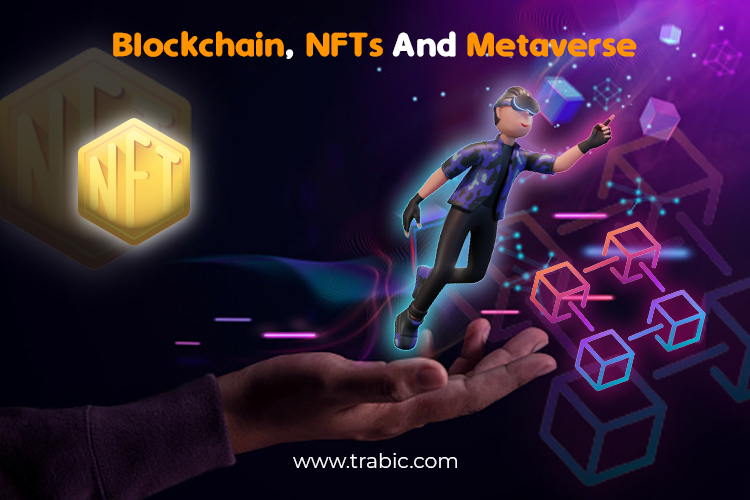
Blockchain is one of the significant recent technological interventions that has gained popularity quickly. By serving as the foundation of the Bitcoin blockchain, it has played a vital role in solving the double spending problem. Subsequently, blockchain also functioned as the fundamental for constructing NFTs or non-fungible tokens that introduced interoperability and scarcity features. As interest grows, we should explore the potential role of NFTs and blockchains in the Metaverse.
What are NFTs and the Metaverse?
Just to understand the role of NFTs in the emerging Metaverse, we need to find the correct answer to “What are NFTs and the Metaverse?” before moving further. NFTs, or non-fungible tokens, are a latter category of digital assets that are impressive, inseparable, and immutable. They help represent ownership of digital and physical assets on the blockchain. From digital art to the gaming industry, NFTs are creating an impact everywhere. To comprehend the role of NFTs in the Metaverse, we need to understand what it is.
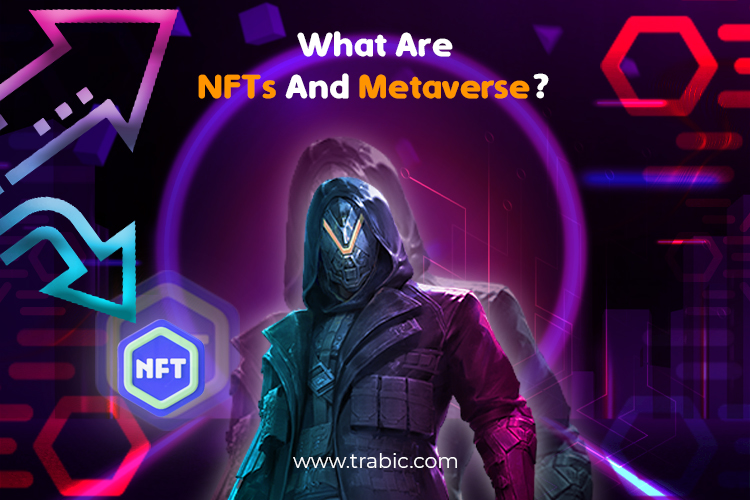
It is purely a digital environment operating on the blockchain, where technologies like VR and AR function as visual component providers. The decentralized nature of blockchain offers unlimited business opportunities and social interaction possibilities. It provides a highly versatile, scalable, and interoperable digital environment. Most importantly, it blends innovative technology with a model of interaction between participants from an individual and corporate perspective.
Are NFTs part of the Metaverse?
Almost all discussions about the it, are dominantly directed toward the possibility of merging the Metaverse and NFTs. At the same time, many think NFTs are just its components in a wider dimension. NFTs and Metaverses are almost synonymous. The main reason for such assumptions is the exponential growth of NFTs in the blockchain gaming space. It is quite reasonable to speculate that it is only formed through virtual worlds. Interoperable 3D virtual space games can drive its development by providing virtual worlds.
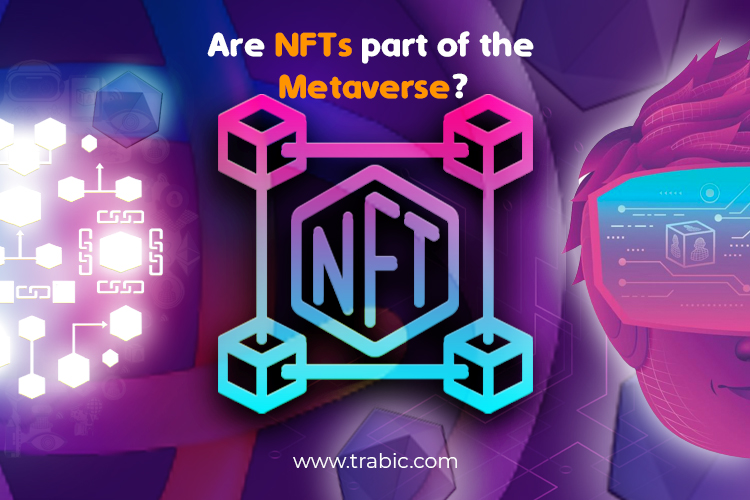
Additionally, associating real-life identities with digital avatars provides an opportunity to use NFTs to define access to it. The first example of a metaverse NFT token was revealed in 2019 with an instance of NFT Controlled Access. The first NFT. NYC conference in 2019 used NFT-based tickets to grant admission to the event. Even if no one called this conference a “metaverse,” it certainly set a favorable precedent for NFT metaverse interactions.
Several new projects have emerged recently to take advantage of the intersection of non-fungible tokens and the immersive space, with good benchmarks. These projects are focused on introducing large-scale transformations in online interaction approaches. The Decentraland example shows how users can use LAND tokens to take real estate ownership in it.
Will NFTs build a metaverse?
It is a large-scale concept, and NFTs can serve as key concepts in a broader ecosystem. The NFT immersive space project promotes using NFTs as virtual property deeds. NFTs help gains exclusive access to enter some obvious locations and grant access to other users in it. NFT’s smart contract functionality could also help sell real estate in it. The use cases for NFTs in the 3D virtual space primarily focus on NFT control access during the early stages of its development.
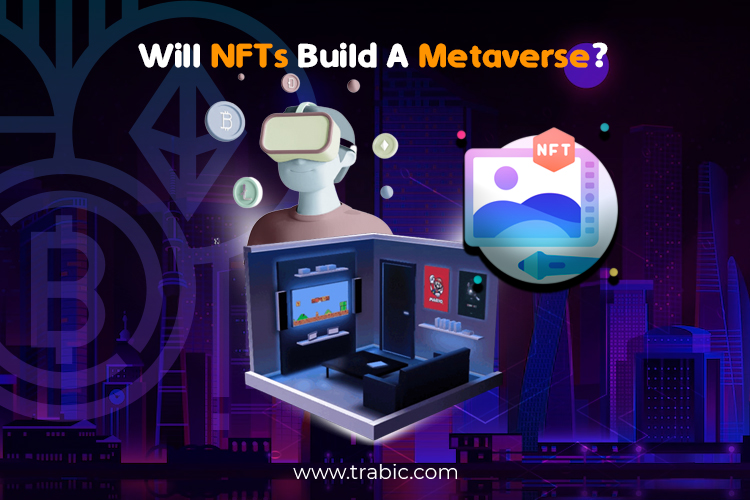
Similar to the first-ever real-world illustration of executing NFTs in it, NFT-controlled access can help secure VIP access to real-world and 3D virtual space events. NFTs can also help with branded merchandise airdrops and special access to followers. In addition to increasing the efficiency of fan engagement, NFTs can introduce interoperability outside the immersive space with infrastructure that supports location-based engagement and augmented reality capabilities. So it is transparent that this immersive space and NFTs are perfect for each other.
Impact of NFTs on the Metaverse
Anyone looking for an answer to “Are NFTs part of the metaverse?” may have found different ways NFTs can assist you in creating your 3D virtual space. However, it is crucial to identify the importance of NFTs in varying the basic configuration of the Metaverse. Note that NFTs may disrupt traditional social network precedents for user interaction, transactions, and socialization in it. So how will these effects broadly apply to it in nature? Here are some highlights of how the interactions of 3D Virtual Space NFTs will unfold in the future.
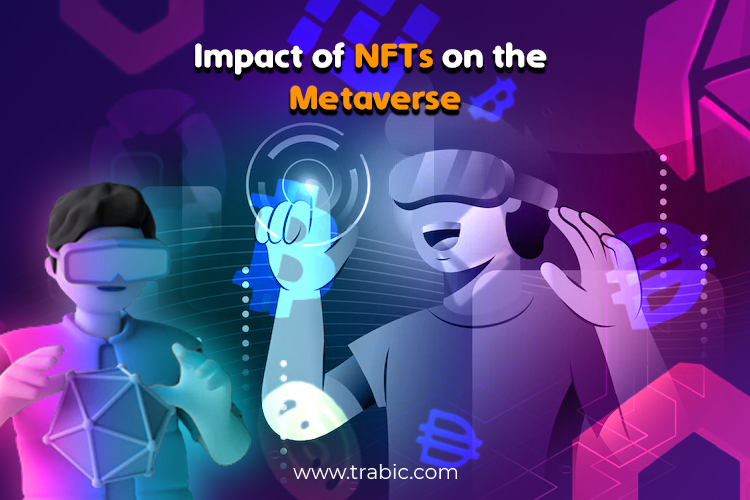
The path to a fair and transparent economy
Individual users and businesses can now easily represent their real-world assets and solutions in a digitally distributed environment. It has the potential to open up to more real-world assets by using innovative game models in sync with interoperable blockchain games. The role of NFTs in the immersive space becomes more prominent in new models such as play-to-earn game models. Not only do we use NFTs to provide opportunities to drive engagement in the Metaverse, but we also give players a chance. On top of that, Play-to-Earn games propose an appropriate gameplay experience by permitting players to possess and control their assets fully.
One cannot help but notice the importance of the play-to-earn game guild in facilitating interaction growth in the NFT metaverse. Guilds act as intermediaries to purchase in-game NFT resources such as assets and land. One can then rent out assets and land to players, who can use them in various virtual worlds for a yield. In return, guilds that play and earn will only take a small share of the revenue. As a result, leveraging NFTs will find the perfect foundation for a fair and open economy in the Metaverse. Guilds can lower the barrier to entry into play-to-eating games by giving players a head start with no upfront investment.
You can see the potential for a fair economy in the immersive space, where everyone can participate. Users can trade NFT assets such as in-game collectibles and digital real estate barrier-free on the NFT Marketplace.
The role of NFTs in the immersive virtual world is evident because blockchains offer transparency and immutability. An impartial and honest economy in it, depends heavily on these aspects. Fundamental laws of supply and market drive the lack of NFTs and their on-chain significance. Consequently, we couldn’t find the possibility of artificial value inflation. This way, you can witness how the immersive virtual world and NFTs operate together to build a transparent and equitable economy.
A new generation of community, social, and identity experiences
The impact of the NFT Metaverse project will also play an essential role in transforming users’ identity and social and community experiences in this immersive virtual world. By holding NFT assets, users can support specific projects or express their opinions about the virtual and real worlds. As a result, like-minded NFT owners can form a community to share experiences and collaborate on content creation.
The NFT Avatars trending example shows how immersive virtual world NFT connectivity is changing the world. NFT avatars are representatives of the player’s actual self and the player’s imagined self. Players can use NFT avatars as access tokens to move and switch between locations in the immersive virtual world. NFTs can extend a user’s real-life identity with full ownership, control, and flexibility to build virtual identities.
NFT avatars allow users to gain virtual memberships for different experiences in the real world and the 3d virtual space. Therefore, combining both of them can improve the user’s social and community experience. The application of NFT avatars in the 3D Virtual Space for startup launches and content creation demonstrates the potential.
New trends in real estate
The virtual world means many virtual spaces and real estate. NFTs can be used to take full ownership of virtual space within the Metaverse. With the help of blockchain, users can easily prove ownership of assets while developing virtual real estate. One meaningful use case for such NFT metaverse projects is marketing virtual land for profit. You can also lease land for passive income while devising diverse structures such as online shops and hosting events.
Decentraland is the most famous example showcasing digital real estate scenarios in the Metaverse. Recently, Decentraland hosted a virtual fashion exhibition in collaboration with Adidas. The exhibition introduced fashion design auctions as NFTs. Therefore, one has no hesitation in considering the possibility of future virtual space auctions in the Metaverse. The widespread of virtual real estate has also lured interest from music artists who exercise the right of their work. Digital real estate broadly refers to future digital assets ownership, and every NFT owner will have a space in the Metaverse.
Critical differences between NFTs and Metaverse
NFT and Metaverse are two of the hottest terms in Web 3.0 that are emerging right now. Almost everyone in the tech world wants to know, “Are NFTs and the Metaverse the same thing?” Their popularity has increased massively at unparalleled levels. On the contrary, it is essential to look at how both terms differ. The differences between non-fungible tokens and the immersive space help us understand how they fit into the broader Web 3.0 ecosystem. Many of you must have realized that the Internet we see today is a perfect iteration of the same thing.
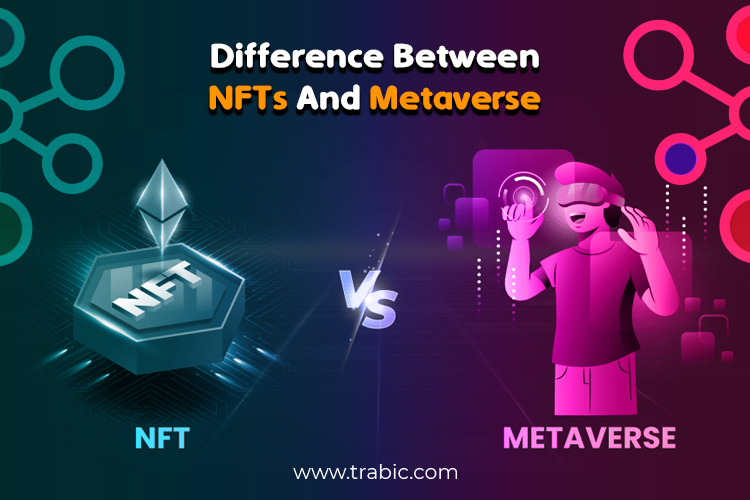
But Web 2.0, or the Internet as we see it and use it today, hides many complications. For example, controlling user data by a centralized company is a significant obstacle to user privacy. The concept of Metaverses and NFTs is revolutionizing the future of the Internet. The main distinction between non-fungible tokens and the immersive space lies in their basic definitions. A non-fungible token is a virtual token, while the Metaverse is its virtual world. Here is a detailed overview of their differences.
Foundation
The NFT and Metaverse definitions provide a reasonable basis for effectively comparing the two. The fundamental underpinnings of the comparison origin between NFTs and the Metaverse circulate around blockchain technology. Blockchain is an integrated part of NFTs as it is integral to developing smart contracts that govern NFT ownership and transactions. Non-fungible tokens have the characteristics of immutability, non-fungibility, and security. On the other hand, the Metaverse offers a wide range of properties such as decentralization, user identity, creator economy, and experience.
Origin
The origins of NFTs can be traced back to 2017 when CryptoPunks were introduced. At this point, the CryptoKitties collection also released news about congestion on the Ethereum network. The origin of NFTs suggests the potential to create new blockchain-based assets that exhibit unique ownership. As a result, the emergence of NFTs triggered new developments that facilitate the decentralization of asset ownership.
Comparing the Metaverse and NFTs on their origins shows the vision and goals behind each technology. Speaking of goals, the Metaverse has more than one goal. It improves decentralization and opens the door to many other use cases. The Metaverse’s origins can be traced back to his science fiction novels that depicted the Metaverse as an escape from the real world.
Ease of use
The next notable highlight of the difference between non-fungible tokens and the Metaverse is the ease of use. How easy is it to access an NFT or Metaverse platform? You can find many platforms, such as the NFT Marketplace, to get the best of his NFTs. OpenSea is currently the largest NFT marketplace where you can navigate all the details of your NFTs before you buy.
You will also find that you can easily access the Metaverse from multiple platforms. Users may access the Sandbox Metaverse, Roblox Games Metaverse, or other Metaverse Platforms, particularly the Facebook Meta Platform. All that is required is your favorite set of VR or XR gadgets to enter any Metaverse platform.
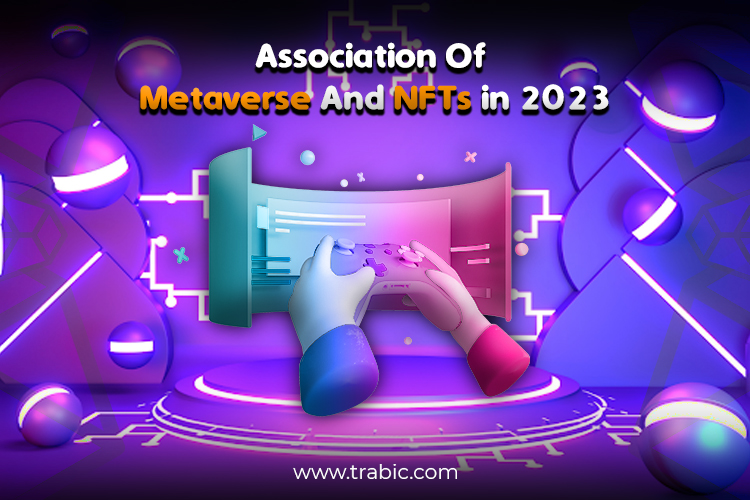
Pingback: